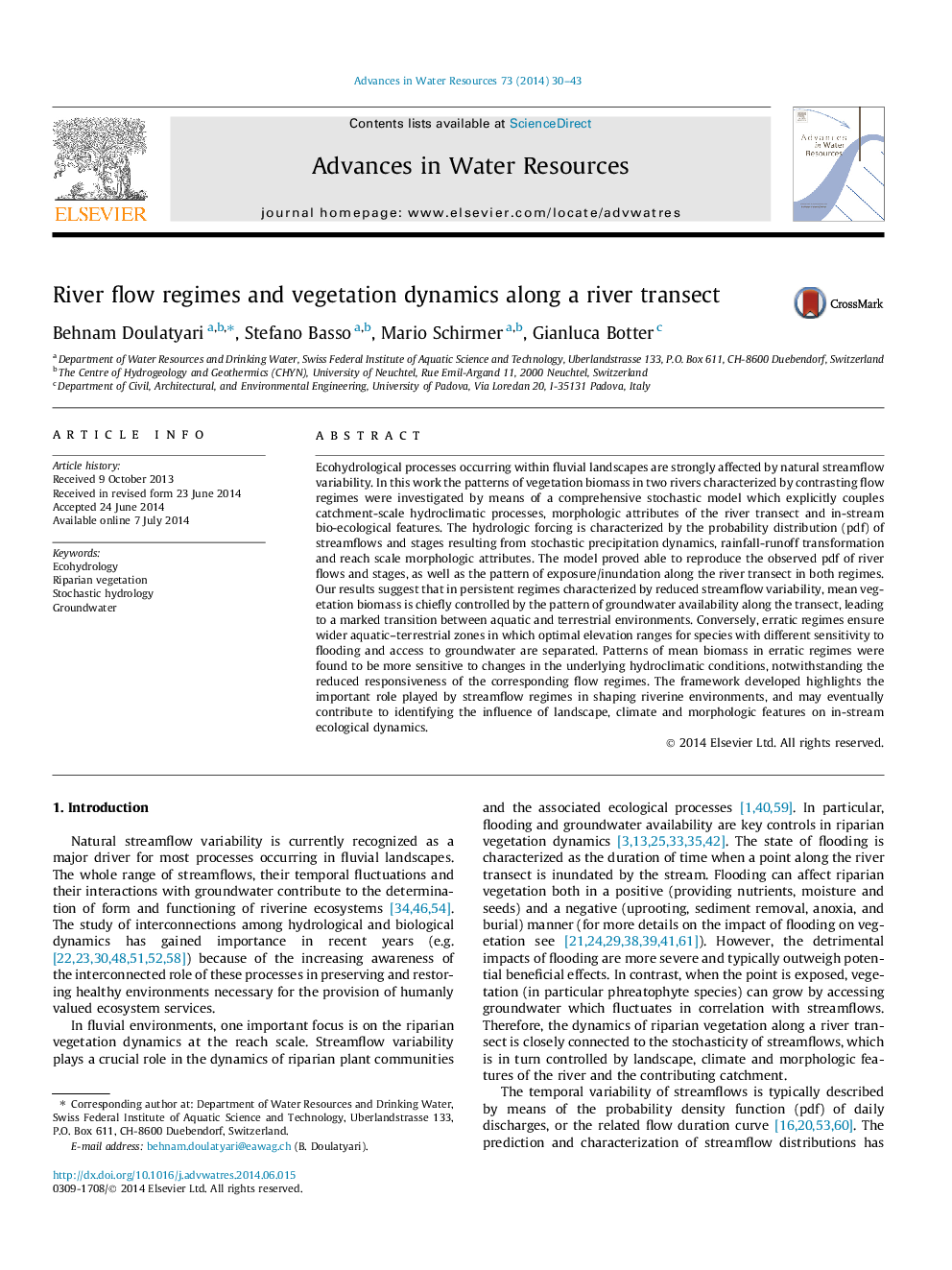| کد مقاله | کد نشریه | سال انتشار | مقاله انگلیسی | نسخه تمام متن |
|---|---|---|---|---|
| 4525463 | 1625636 | 2014 | 14 صفحه PDF | دانلود رایگان |
• Riparian vegetation patterns behave differently in erratic vs. persistent regimes.
• In persistent regimes vegetation growth is mainly limited by groundwater access.
• The zone impacted by flooding is larger in erratic regimes.
• Erratic regimes display heterogeneous vegetation patterns for different species.
• In erratic regimes vegetation is more sensitive to hydroclimatic change.
Ecohydrological processes occurring within fluvial landscapes are strongly affected by natural streamflow variability. In this work the patterns of vegetation biomass in two rivers characterized by contrasting flow regimes were investigated by means of a comprehensive stochastic model which explicitly couples catchment-scale hydroclimatic processes, morphologic attributes of the river transect and in-stream bio-ecological features. The hydrologic forcing is characterized by the probability distribution (pdf) of streamflows and stages resulting from stochastic precipitation dynamics, rainfall-runoff transformation and reach scale morphologic attributes. The model proved able to reproduce the observed pdf of river flows and stages, as well as the pattern of exposure/inundation along the river transect in both regimes. Our results suggest that in persistent regimes characterized by reduced streamflow variability, mean vegetation biomass is chiefly controlled by the pattern of groundwater availability along the transect, leading to a marked transition between aquatic and terrestrial environments. Conversely, erratic regimes ensure wider aquatic–terrestrial zones in which optimal elevation ranges for species with different sensitivity to flooding and access to groundwater are separated. Patterns of mean biomass in erratic regimes were found to be more sensitive to changes in the underlying hydroclimatic conditions, notwithstanding the reduced responsiveness of the corresponding flow regimes. The framework developed highlights the important role played by streamflow regimes in shaping riverine environments, and may eventually contribute to identifying the influence of landscape, climate and morphologic features on in-stream ecological dynamics.
Journal: Advances in Water Resources - Volume 73, November 2014, Pages 30–43
